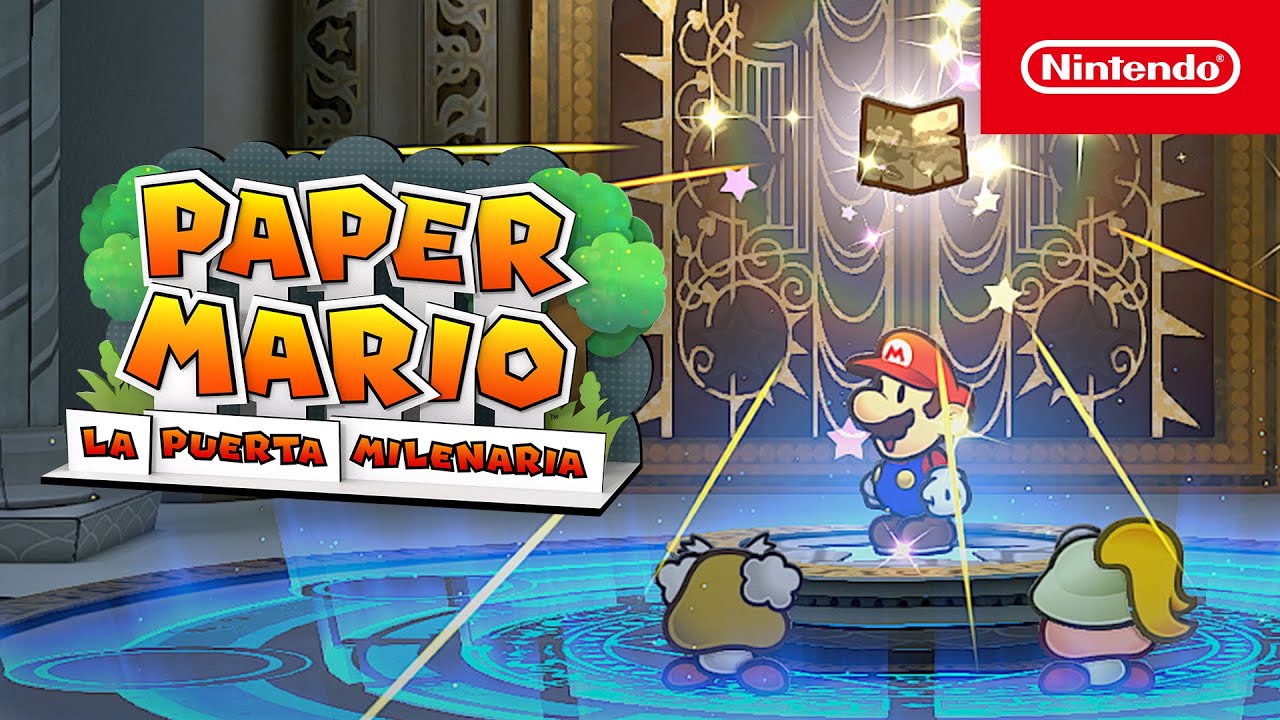The Nintendo Switch may be approaching the end of its lifecycle, yet it has never been more abundant with games across various genres. Indeed, in addition to these original titles, Nintendo has also increased its offerings of remasters, remakes, and other re-releases of classic games. The Kyoto-based company has followed this trend as well; however, when a 20-year-old game returns with an update, one cannot help but welcome it. Paper Mario: The Millennial Door, the title under discussion, arrives on Nintendo Switch two decades after delighting players on GameCube. What changes have been made? What elements remain unchanged? We provide all the details in our comprehensive review.
The Nintendo Switch may be nearing the end of its lifecycle, yet it remains exceptionally well-stocked with games across various genres. Kyoto’s company has embraced the convenience of releasing numerous remasters, remakes, and re-releases alongside original titles. When a 20-year-old game returns with enhanced visuals and features, it is hard to resist. Paper Mario: The Immortal Milieu, which we will be reviewing, arrives on Nintendo Switch two decades after its initial release on GameCube. Our comprehensive review delves into what has changed and what remains the same in this updated version.
Regarding the technique, “Paper Mario: The Great Gate Adventure” is recognized as a remaster rather than a remake, with substantial restoration efforts. While retaining its original 20-year-old staging, the game impresses visually with enhanced graphics. Improved brightness, richer textures in greater numbers, and refined decorative elements contribute to an overall polished appearance. However, on the gameplay front, the mechanics from 2004 remain unchanged, making it accessible for a wide audience due to its ease of understanding. As a platformer within the RPG genre, the game adheres to fixed battle rules that maintain dynamism. Instead of selecting an attack and waiting passively for execution, players can increase damage dealt by pressing the A button at the correct moment. For example, when Mario performs his Jump attack, following Gommlie’s tutorial timing results in Mario jumping twice on the enemy’s head instead of once. This principle applies to other attacks as well; for Cumulia’s Crush’tout attack, it is only effective if the reticle is centered on the target, otherwise Mario might scrape the ground with Cumulia’s teeth. Attacks are never executed automatically, ensuring player engagement and alertness throughout.
A GAMEPLAY REMAINING EVER AS EFFECTIVE
The gameplay has remained unchanged, which is advantageous in turn-based formats as they tend to age well. In this iteration, Mario retains his classic abilities but now includes a hammer as an additional tool. Whether in platform sections or during fixed battles, you can attack enemies by jumping on them or using the hammer, allowing you to initiate combat with a preemptive strike. This provides a significant advantage and is particularly useful for quickly resolving conflicts. If an enemy jumps on Mario, pressing button B allows him to counterattack, or pressing button A splits the damage taken. Timing and knowledge of enemy attack patterns are crucial for effective counters; countering not only blocks an attack but also turns it against the attacker. Both countering and evading are executed in the same manner. However, attempting to counter a distant enemy’s attack is ineffective as they will not be hit unless they come within range.
In this revised and corrected version of Paper Mario: The Thousand-Year Door, Mario still has the opportunity to be supported by various allies throughout his adventure. Our hero will encounter several companions who assist him in solving puzzles. Among them are Goomelie, Koopek, and Cumulia, each with their own unique attacks and abilities. For example, Koopek can reach distant objects, while Goomelia’s high intelligence helps Mario navigate complex situations. These allies also gain experience levels by collecting Sun tokens found throughout the game. As for Mario himself, his level progresses based on star points earned from defeating enemies. After accumulating 100 star points, he can choose to increase either his heart (energy), flower (magic), or badge points. There are over 80 badges to discover during the journey. In summary, there is much to do and explore. However, it’s worth noting that this remastered version runs at a frame rate of 30fps, whereas the original game operated at 60 frames per second. While this difference may not significantly impact gameplay in practice, it is an important detail to mention.
Have any thoughts?
Share your reaction or leave a quick response — we’d love to hear what you think!

